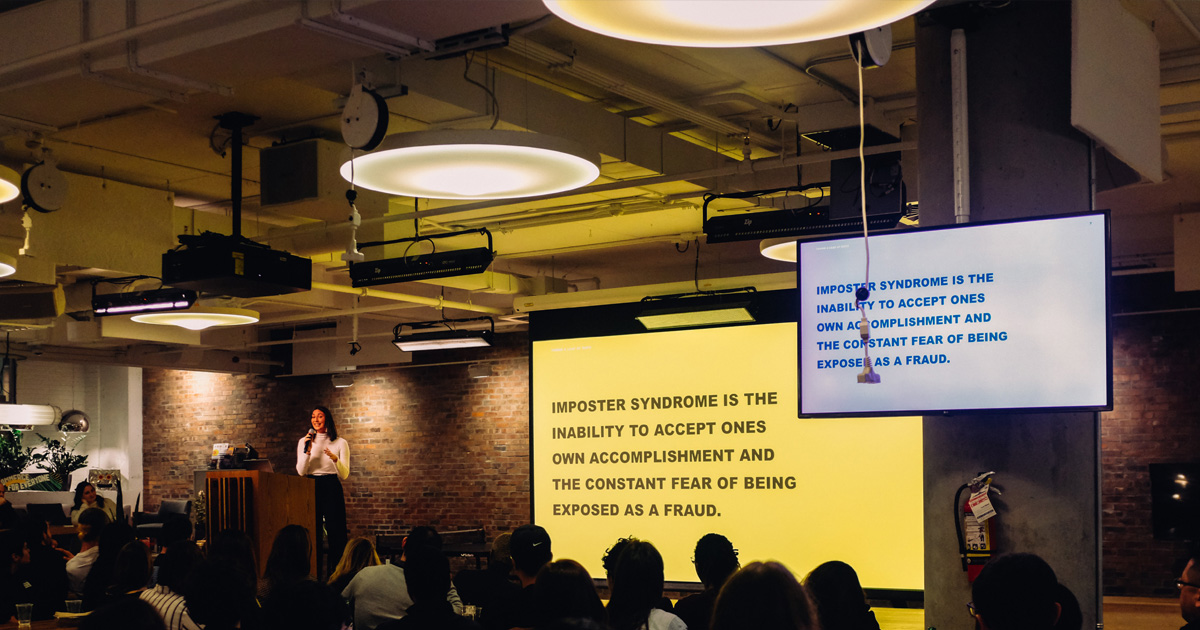How to Increase Attendance at Virtual Events: Proven Strategies That Work
Virtual events present a multitude of benefits. They’re engaging, cost-effective, scalable, and often easier to organise than in-person conferences. Yet, despite these advantages, many event planners struggle with declining attendance and rising virtual event fatigue.
So, how can you boost attendance, reduce drop-offs, and keep your virtual audience engaged?
This guide explores the most effective attendance-boosting tips, including strategies used before and during the event. You’ll learn how to increase virtual event attendance, optimise your agenda, and reduce fatigue — all backed by data and best practices.
Table of Contents
- How to improve the attendance rate before the event
- How to improve attendance rate during the event
- What is virtual event fatigue, and how to fix it
- Conclusion
How to increase the attendance rate before the event
According to Communiqué Benchmark Report, only around 47% of participants actually attend live events they register to. Here’s how to increase attendance percentage and convert registrants into attendees.
Leverage all your channels
Email marketing is one of the most effective ways to drive attendance to your virtual event. In fact, more than 76% of event planners include email campaigns in their strategy in order to attract participants. Reminders in your inbox one week, one day, and one hour before the start can highly improve your attendance rate! To ensure you land in the right inboxes of your attendants, use the best email extractor that suits your business needs. Also, consider using personalised subject lines and content to grab attention.
Social media also plays a crucial role. Share teasers, behind-the-scenes content, and countdowns. Invite your keynote speakers to share the event with their followers to tap into their built-in audiences.
Pick the right day
The best days for virtual attendance are Tuesdays, Wednesdays, and Thursdays. Avoid Mondays (too busy) and Fridays (low focus). For weekend events, survey your audience to gauge interest.
Make your agenda remarkable
Your agenda is the one that, in the end, will sell your event. Are your presentations proving value to your audience? Is there enough variety? Are sessions short and on point? The program you offer will attract the right crowd, so make sure it's remarkable!
Once your program is set, it’s time to create a visually appealing event landing page with:
-
Professional speaker bios
-
Easy sign-up links
-
Sponsor highlights
-
Clear schedule breakdowns
Your attendees will bookmark and check this specific page numerous times. Make sure you are creating a visually appealing, comprehensive, and clear page. Leave a positive impression by adopting professional photos and engaging descriptions. A compelling agenda is one of the best ways to get people to come to your event and stay engaged.
How to boost attendance rate during the event
Across five studies, including more than 3000 participants, scientists found that the three main factors that lead to an attendance drop during a live event are duration, burstiness, and frequency.
Duration refers to the session length. Indubitably, a longer session will lead to an increased drop in presence. Make sure your presentations are short and straight to the point in order to keep your audience engaged and interested.
Frequency relates to how often the same event is taking place. If you asked your crowd if they would rather join a long 4-day virtual event instead of an event divided into two blocks, most attendees would prefer picking a 2-day conference with a few weeks in between. When your virtual event is spread over a longer period of time, committing to the program feels more comfortable.
Burstiness is defined in the study as the act of jumping from one session to another without any breaks in between. As you can imagine, rushing from one presentation to another, without any time to unwind and take a moment, can be quite draining.
From all the main determinants mentioned above, the lack of breaks between sessions has been proven to be the factor that contributed to the most fatigue. This notion proves that pauses are vital. During your planning, make sure you are prioritizing them.
What is virtual event fatigue, and how to fix it
One of the biggest challenges in improving virtual event attendance is combating the growing issue of virtual event fatigue. While virtual platforms offer flexibility, accessibility, and cost savings, they also bring with them a set of psychological and physiological challenges that can significantly reduce attendance and engagement. Understanding the root causes of this fatigue is essential for event organisers who want to boost participation and deliver successful experiences.
Recent virtual event fatigue statistics show that participants often experience a combination of three types of fatigue: visual, emotional, and motivational. These underlying factors contribute to low energy levels, disengagement, and even mid-event dropouts — making it harder to maintain a good attendance rate and harder still to encourage return participation.
Visual fatigue
Staring at a screen for long periods is physically draining. Attendees often report symptoms such as dry eyes, headaches, blurred vision, and general discomfort. Unlike in-person events, where movement and visual variety are natural, virtual events often lock participants into a fixed viewpoint, leading to overstimulation and strain.
To reduce visual fatigue, plan regular screen breaks throughout your event. Encourage attendees to step away, stretch, or even look outside for a few minutes. Offering short “camera-off” moments, especially during less interactive segments, also gives participants a chance to rest their eyes. These small adjustments can help refresh focus and improve the overall experience — and they make a big difference when trying to increase attendance percentage throughout longer sessions.
Emotional fatigue
Virtual environments can also be emotionally demanding. The constant pressure to appear attentive, smile on camera, and manage how one is perceived leads to emotional fatigue. This is especially true when participants are required to be on video for extended periods or during sessions with no built-in interactivity.
When people are face-to-face, they naturally adjust their body language, eye contact, and social cues. But in virtual events, that freedom is reduced. Attendees often feel they’re being watched and subconsciously overcompensate — nodding more, smiling more, and exaggerating expressions. This constant self-monitoring can be mentally exhausting.
Give attendees the flexibility to participate with cameras off when appropriate. Incorporate breakout rooms or informal check-ins to create more relaxed, human-centred spaces. Reducing the social pressure helps attendees stay mentally present and emotionally resilient, improving their experience and reducing early drop-offs.
Motivation fatigue
Motivation fatigue refers to the gradual loss of interest and energy over the course of an event — particularly when content is repetitive, overly dense, or lacking interaction. Virtual attendees are especially prone to multitasking, zoning out, or abandoning sessions when they feel overwhelmed or uninspired.
To combat this, avoid back-to-back sessions and don’t overload your agenda. Use a mix of formats: Include live polls, quizzes, storytelling, fireside chats, and practical demonstrations to keep energy high. Encourage speakers to bring personality into their delivery with varied tones, real-life anecdotes, and visual support.
Even small changes to your event design can reinvigorate participants. When you help your audience stay motivated, you significantly improve your chances of maintaining a good attendance rate — and increase the likelihood they’ll return for future events.
Conclusion
Now that remote meetings and virtual events are becoming part of the norm, we will notice more and more events shifting to a hybrid or 100% online format.
Organising and promoting virtual events can take extensive months of planning. By placing particular attention to registration and engagement, you can substantially improve the attendance rate before and during the event.
As the need for virtual engagement continues to grow, the technology behind these online experiences must evolve to offer more secure, interactive, and user-friendly environments. Digital Samba offers an ideal solution with its GDPR-compliant video calling API and video conference SDK. Being EU-hosted and offering end-to-end encryption, Digital Samba places the utmost priority on privacy and data protection. Through Digital Samba Embedded, you can embed video calling on your website or seamlessly integrate a video room within your existing platforms, providing a consistent and immersive experience for all participants. Whether hosting webinars, corporate meetings, or educational sessions, Digital Samba's services empower you to make the most of your virtual gatherings while ensuring complete compliance with EU regulations.
FAQs
A good attendance rate for virtual events is typically between 40–60% of registrants. With strong engagement strategies, you can aim higher.
Use email and social media campaigns, feature high-profile speakers, offer incentives, and build anticipation with teaser content.
If needed, cancel with professionalism. Notify attendees early, offer refunds (if applicable), and share plans for a future, improved version.
Long screen time, lack of breaks, camera pressure, and repetitive formats are common causes. Plan with these pain points in mind.
Yes! Contests, giveaways, and leaderboard challenges can boost attendance and increase real-time engagement.
Look at drop-off rates, feedback, and participation. Low turnout or engagement indicates room for better content, timing, or promotion.
Share this
You May Also Like
These Related Stories
(4)-1.png)
How to Make Virtual Events More Engaging

Planning a Successful Virtual Event: Tips and Strategies

